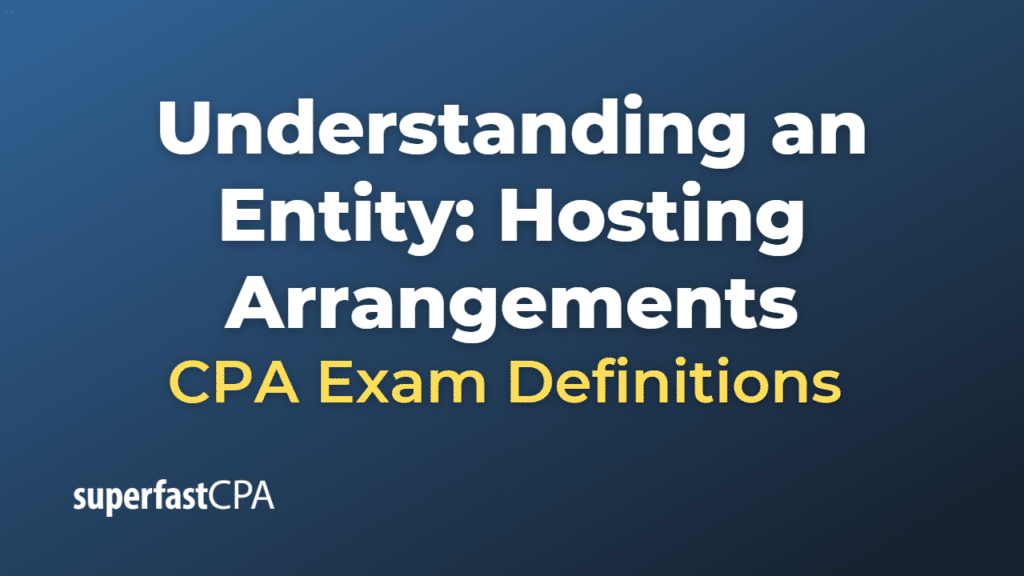Understanding an Entity: Hosting Arrangements
An auditor needs to obtain an understanding of an entity’s hosting arrangements, as they can affect the processing, storage, and reporting of financial data. This understanding helps the auditor assess the risks of material misstatements and design further audit procedures. The following steps outline how to obtain an understanding of an entity’s hosting arrangements and document the procedures performed:
- Review hosting agreements: Obtain and review the entity’s hosting agreements, including service level agreements (SLAs), terms of service, and data privacy policies, to understand the roles and responsibilities of both the entity and the hosting service provider (HSP).
- Understand the hosting environment: Gain an understanding of the hosting environment used by the entity, such as dedicated servers, colocation, or managed hosting, and the associated benefits, risks, and control responsibilities.
- Identify key hosting services: Determine the key hosting services provided by the HSP that are relevant to the financial reporting process, such as server management, storage, backup, and network services, and understand how these services support the entity’s significant business processes.
- Evaluate the entity’s hosting governance: Assess the entity’s hosting governance framework, including its risk assessment, hosting strategy, and policies and procedures related to hosting arrangements. Understand the roles and responsibilities of key personnel involved in managing and overseeing the entity’s hosting arrangements.
- Assess hosting-related controls: Evaluate the design and effectiveness of controls related to hosting arrangements, focusing on areas such as physical security, access controls, environmental controls, data backup and recovery, and incident response. Understand the roles of both the entity and the HSP in managing and maintaining these controls.
- Review HSP audit reports: Obtain and review any available audit reports or certifications related to the HSP’s internal controls, such as Service Organization Control (SOC) reports or ISO certifications. Assess the adequacy of the HSP’s controls in addressing risks related to the entity’s financial reporting process.
- Interview key personnel: Interview key personnel involved in the implementation, operation, and maintenance of the entity’s hosting arrangements, such as IT management, system administrators, and business process owners. Obtain insights into the entity’s hosting strategy, challenges, and control activities, as well as any known issues or risks.
- Document the understanding: Create clear and comprehensive documentation of the procedures performed to obtain an understanding of the entity’s hosting arrangements, including a narrative or flowchart that details the hosting environment, services, and related controls. Highlight any identified risks or control weaknesses and describe how they may impact the financial statements.
- Assess the risks of material misstatements: Based on the understanding of the entity’s hosting arrangements, identify and assess the risks of material misstatements at the assertion level for each relevant financial statement item. This information will be used to plan further audit procedures, including tests of controls and substantive procedures.
By following these steps, auditors can obtain an understanding of an entity’s hosting arrangements and document the procedures performed, providing a solid foundation for the planning and execution of the audit.













